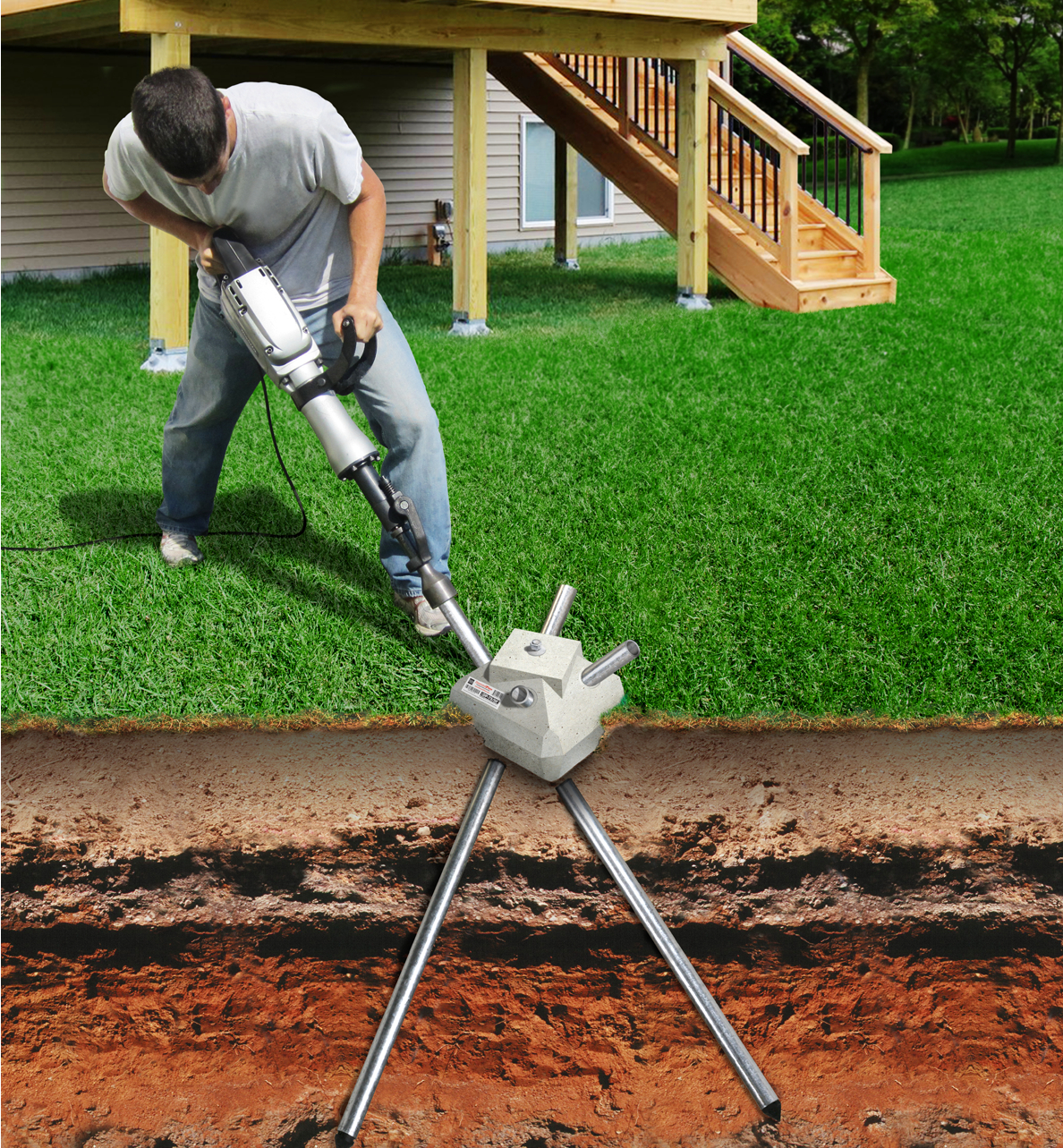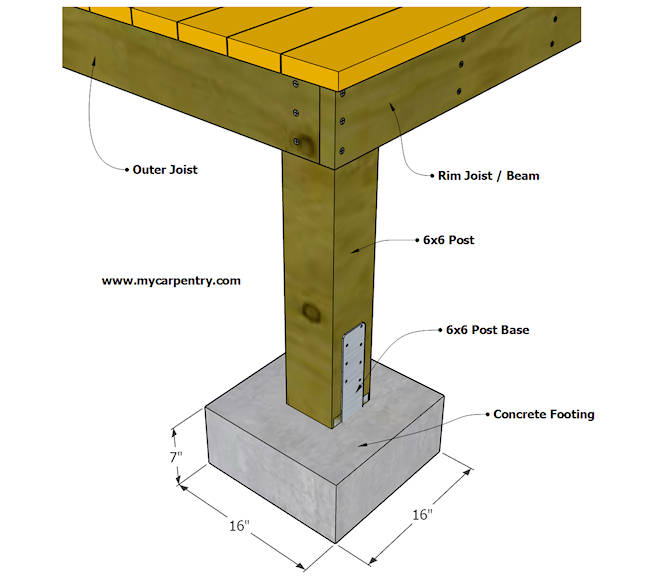Deck Footings Demystified: Your Blueprint for a Safe, Lasting Outdoor Haven
Wiki Article
Professional Tips for Putting Up Deck Footings to Assistance Your Outdoor Room
When it comes to building a deck, one of the most crucial aspects to take into consideration is the setup of correct footings. These footings are the foundation whereupon your exterior space will certainly rest, offering security and support for several years to come. What precisely does it take to set up deck grounds correctly? In this conversation, we will check out experienced suggestions and techniques that can assist make certain a successful and resilient deck installment. From choosing the right kind of footings to staying clear of usual blunders, we will give you with the expertise and insights you need to with confidence start your deck-building trip. Allow's dive right in and find the secret to a solid and long-lasting exterior room.Relevance of Proper Deck Grounds
Appropriate deck footings are important for guaranteeing the security and longevity of your outdoor area. Without solid and appropriately installed footings, your deck may end up being unpredictable, leading to safety and security risks and pricey fixings.
In enhancement to stability, correct deck grounds additionally add to the durability of your outside space (Deck Footings). Grounds that are created and constructed to withstand the aspects and soil problems in your location will certainly help protect against the deck from changing or clearing up in time. By ensuring the grounds are properly sized and installed, you can decrease the threat of damages to the deck structure, extending its lifespan and reducing the demand for costly repairs or substitutes

Selecting the Right Sort Of Grounds
When choosing the ideal kind of grounds for your deck, it is very important to take into consideration factors such as soil conditions, local building ordinance, and the overall design of your outside area. The kind of footing you pick will play a critical role in ensuring the stability and long life of your deck.One usual kind of ground is the concrete ground. Concrete grounds are suitable for most soil conditions and supply excellent support for decks.
In many cases, you might require to make use of specific footings, such as heap footings or deep structures, if you are constructing a multi-level or large deck. These footings are developed to disperse the weight of the deck over a larger area, making certain security and protecting against sinking or settling.
Prior to picking a sort of footing, it is vital to consult neighborhood structure codes and guidelines to guarantee compliance. In addition, take into consideration the style and meant use your outdoor room. Aspects such as the size, shape, and load-bearing needs of your deck will certainly influence the kind of footing that is most suitable.
Preparing the Ground for Footing Installment
To appropriately prepare the ground for footing installment, it is crucial the original source to analyze the dirt problems and take required actions to ensure security and durability of the deck. The first action is to dig deep into the location where the footings will certainly be mounted.As soon as the area has actually been excavated, the following step is to portable the soil. This can be done making use of a plate compactor or by utilizing a hand tamper. Condensing the dirt assists to remove any gaps or air pockets, which can lead to clearing up and instability over time.
After compacting the dirt, it is necessary to lay a layer of gravel or crushed rock at the end of the excavation. This will supply water drainage and help to stop water from merging around the footings, which can result original site in disintegration and instability.
Step-by-Step Guide to Installing Deck Footings
After appropriately preparing the ground for footing installment, the next step is to start the process of setting up deck footings. This step-by-step overview will offer you with a clear understanding of how to set up deck grounds for your exterior space.Figure out the location: Begin by marking the settings of the deck footings using risks and string. Ensure that the places line up with the layout and format of your deck.
Dig the holes: Use an article opening miner or an auger to dig the holes for the footings. The depth and diameter of the holes must be in accordance with regional structure codes and the specific needs of your deck design.
Level the openings: Use a degree to ensure that the holes are dug to the correct deepness and are level with each various other. (Deck Footings)
Include gravel: Area a layer of gravel at the end of each hole to improve drain and protect against the wood from decomposing.
Put the grounds: Place the grounds right into the holes, ensuring they are degree and plumb. Make use of a degree and a gauging tape to ensure precision.
Protect the footings: Put concrete right into the openings around the footings, loading them to the top. Use an article level to ensure the grounds continue to be degree as the concrete sets.
Allow time for curing: Let the concrete treatment according to the supplier's guidelines prior to waging the deck building and construction.
Usual Mistakes to Avoid Throughout Footing Installment
One important aspect to think about throughout the installation of deck footings is staying clear of usual errors that can endanger the security and durability of your outside room. While deck footings might appear like a simple and easy part of the construction procedure, overlooking particular aspects can cause pricey repair work and prospective security dangers down the line.
In addition, neglecting to set up correct drain steps can create water to build up around the grounds, resulting in rot, decay, and the ultimate weakening of the deck's foundation. Making use of the incorrect type of footing product or falling short to effectively safeguard the footings can jeopardize their structural stability.
To prevent these errors, it is necessary to talk to a professional or comply with industry standards to ensure correct footing setup. By doing so, you can make certain the stability and long life of your outdoor room, supplying a delightful and risk-free environment for many years to find.
Verdict
Finally, installing correct deck grounds is crucial for the stability and longevity of your outside room. By choosing the best sort of grounds and adequately preparing the ground, you can make certain a solid foundation for your deck. Adhering to a step-by-step guide and preventing common errors during footing installation will better boost the durability and safety and security of your deck.Proper deck grounds are vital for making certain the security and long life of your outside area. The footings serve as a link in between the ground and the deck, enabling the weight of the deck and its owners to be dispersed equally into the soil.One typical kind of footing is the concrete ground. Insert the footings: Put the grounds into the holes, making certain they are degree and plumb. Secure the grounds: Pour concrete into the openings around the footings, loading them to the top.
Report this wiki page